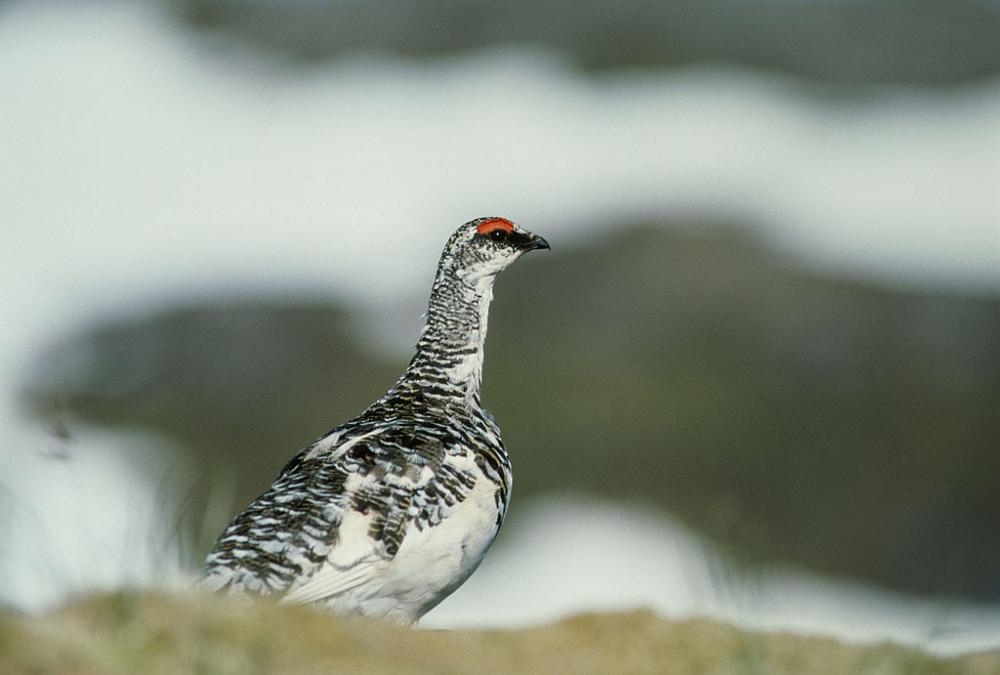Guide to Boreal Birds
Overview
Pairs of Rock Ptarmigans remain together until midway through incubation, when the male deserts his mate. The female raises the chicks, which move about on the tundra in search of insects, buds, and berries, becoming independent at about three months old. The white winter plumage of ptarmigans provides both good camouflage and protection against the cold, because white feathers have empty cells filled with air that help in insulation, whereas colored feathers contain pigment. The Rock Ptarmigan is also the official bird of Nunavut.
Description
13-14" (33-36 cm). In winter, entirely white except for black tail and, in males and most females, black line through eye. In summer, male is flecked with dark gray-brown, wings and belly white. Female paler, with gray, yellowish, and brown on most feathers. Smaller than Willow Ptarmigan, with smaller bill. See White-tailed Ptarmigan.
Voice
Courting male gives a snoring kurr-kurr. Female has clucking and purring notes.
Nesting
6-9 buff eggs, spotted with dark brown, in a sheltered hollow lined with grass and moss.
Habitat
Upland tundra with thickets of willows and heaths.
Range/Migration
Breeds in Alaska and northern Canada. Winters south to tree line.



